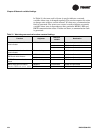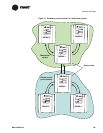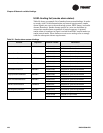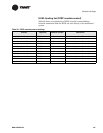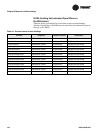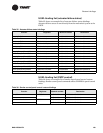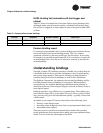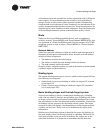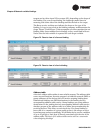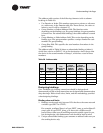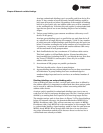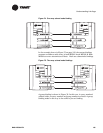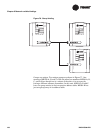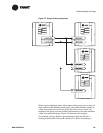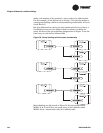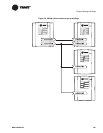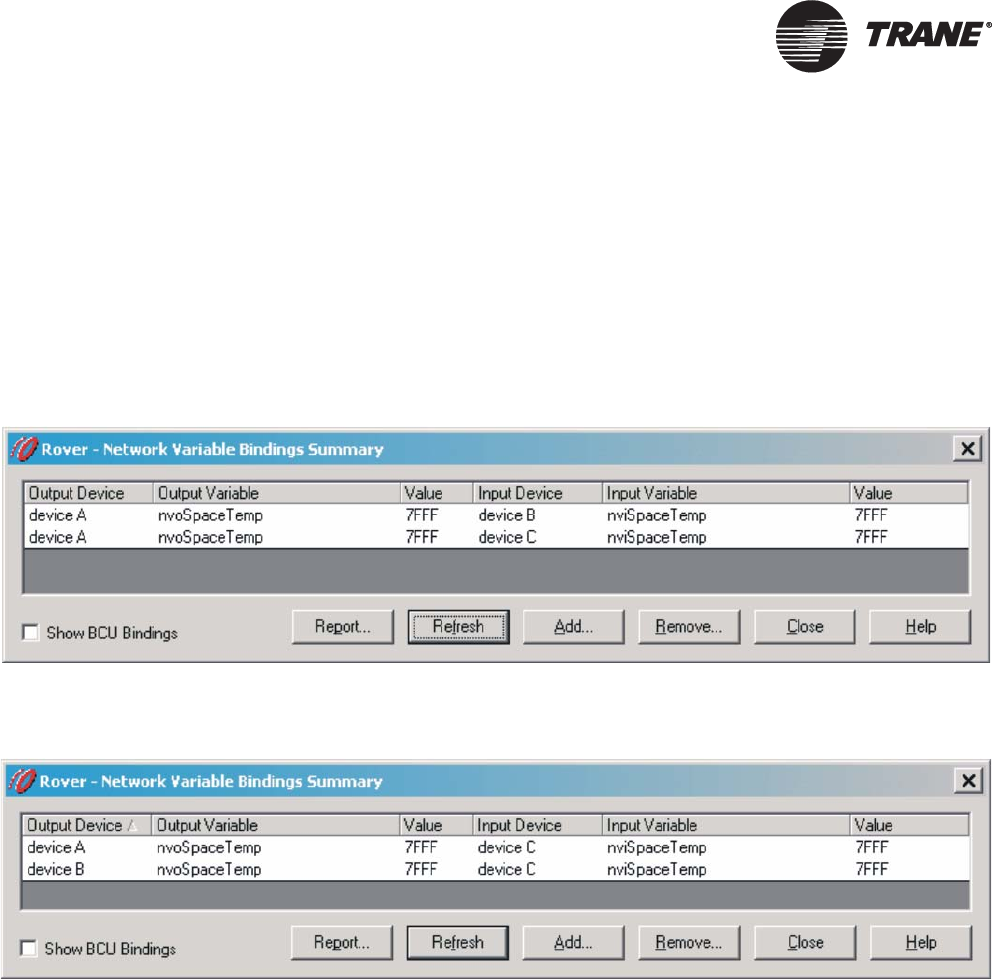
Chapter 8 Network variable bindings
132 BAS-APG001-EN
targets can be either input NVs or output NVs, depending on the shape of
the binding. For a one-to-one binding, the hub/target model loses its
meaning, and either side of the binding could be the hub or the target.
The Rover service tool does not indicate the shape or the type of the
binding. It is up to you to look at the binding summary and determine the
shape.
Figure 72 and Figure 73 show examples of a three-member fan-out
binding and a three-member fan-in binding as they would look in Rover.
Notice that the hub variable is repeated for each target variable.
Figure 72. Rover's view of a fan-out binding
Figure 73. Rover's view of a fan-in binding
Address table
A device’s address table resides in non-volatile memory. The address table
serves several functions. Its main purpose is to hold the network (DSN) or
group addresses of the devices that will receive outgoing binding data.
Subnet/node bindings use DSN destinations in the sending device’s
corresponding address table entries. Group bindings use group address
destinations in the sending device’s corresponding address table entries.
Another purpose of the address table is to define group membership for
receiving devices. This allows a receiving device in a group binding to
know that it is a member of a given group so that it can accept or reject
bound message packets accordingly. A LonWorks device can be a member
of up to 15 groups, a limit that is directly associated with the size of the
address table. The limit of 15 address table entries will be a constraint
when designing bindings.



